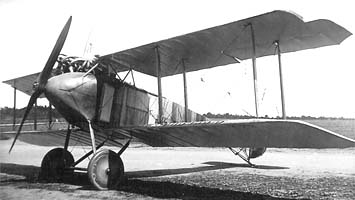| D.IV | |
|---|---|
| Role | Fighter |
| Manufacturer | Fokker |
| Designer | Martin Kreutzer |
| Introduction | 1916[1] |
| Primary users | German Army Swedes |
| Number built | 44 |
The Fokker D.IV was a German fighter biplane of World War I, a development of the D.I. It had a more powerful Mercedes D.III engine, and the first Fokker front-line design to use ailerons in place of wing warping from the start for roll control. The aircraft was purchased in small numbers (40) by the German Army and the Swedes bought 4.[1]
Operators[]
- 40 aircraft.
- Swedish Air Force - Four aircraft.
Specifications[]
General characteristics
- Crew: one pilot
- Length: 6.30 m (21 ft 0 in)
- Wingspan: 9.70 m (31 ft 10 in)
- Height: 2.75 m (9 ft 0 in)
- Wing area: 21.0 m2 (226 ft2)
- Empty weight: 606 kg (1,336 lb)
- Gross weight: 840 kg (1,852 lb)
- Powerplant: 1 × Mercedes D.III straight-6, 120 kW (160 hp)
Performance
- Maximum speed: 100 km/h (62[2] mph)
- Range: 220 km (137 miles)
- Rate of climb: 5.6 m/s (1,100; 20 minutes to 13,100 Ft. ft/min)
Armament
References[]
| Wikimedia Commons has media related to Fokker D.IV. |
- Taylor, Michael J. H. (1989). Jane's Encyclopedia of Aviation. London: Studio Editions. pp. 399.
- World Aircraft Information Files. London: Bright Star Publishing. pp. File 894 Sheet 40–41.
- Green, William; Gordon Swanborough (1994). The Complete Book of Fighters. London: Greenwich Editions. pp. 221.
- Lamberton, W. M. (1960). Fighter Aircraft of the 1914-1918 War. Letchworth,Herts: Harleyford Publications Limited. pp. 218.
- ↑ 1.0 1.1 "Germany - 1916 Fokker D.IV". Blogspot. http://wwiaviation.blogspot.com.au/2011/07/early-fokker-aircraft-part-4-attempts.html. Retrieved 15 March 2012.
- ↑ Henriksson family. "Fokker D.IV". http://www.avrosys.nu/aircraft/Flygkomp/016_fokkerDIV/16FokkerDIV.htm. Retrieved 15 March 2012.
| |||||||||||||||||||||||||||||||||||||||||||||||||||||||||
| |||||||||||||||||||||||||||||||||||||||||||||||||||||||||||||||||||||
The original article can be found at Fokker D.IV and the edit history here.
